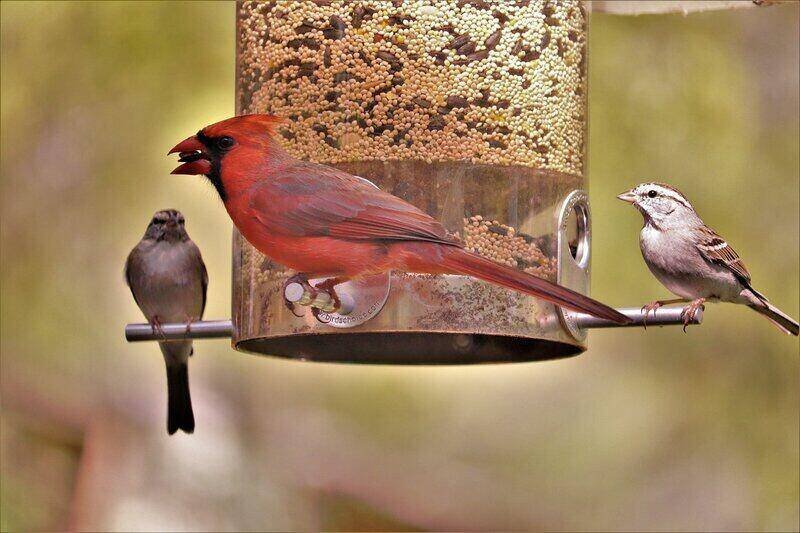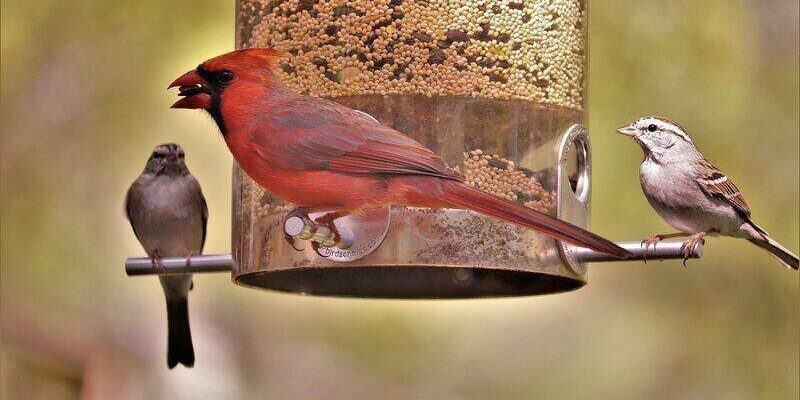
Birds that munch on grub worms, like blue jays and robins, not only bring beauty to your space but also help control pests in your garden. They’re like nature’s little gardeners, managing the insect population while providing you with delightful entertainment. Let’s dig into how you can attract these feathered friends and create a welcoming environment for them.
Understanding Grub Worms
Before diving into attracting birds, let’s chat about what grub worms actually are. Grub worms are the larvae of various beetles, typically found in soil. They’re often white or cream-colored and curl up when disturbed. Though they tend to be a nuisance in gardens, they’re a high-protein food source for many birds.
Here’s the thing: Grub worms are most active in the warmer months. So, when you’re planning to attract birds that feast on them, you’ll want to be proactive during the *early spring and summer*. It’s also essential to recognize that while you want birds to eat those pesky grubs, finding a balance is key. After all, you don’t want your garden to become overrun or too barren.
Creating an Inviting Habitat
Birds are more likely to visit if they feel safe and comfortable in your yard. To create this inviting habitat, you can focus on three main elements: shelter, food, and water.
Shelter: Birds love places to perch and hide. Consider planting native shrubs and trees that provide natural cover. Dense foliage, like a holly bush or even a simple climber, can create a welcoming environment. Not only does this offer shelter from predators, but it also doubles as a staging area for those birds to scout out potential grub worm meals.
Food: While your main goal is to attract birds that eat grub worms, offering a variety of bird feeders filled with seeds can enhance their dining experience. Sunflower seeds are particularly popular among many species. When there’s plenty to eat, birds are more likely to stick around and feast on any grubs they find.
Water: All living creatures need water to thrive. A simple birdbath can work wonders. Make sure it’s shallow enough for birds to safely drink and bathe. Adding a small fountain can create a gentle trickling sound that birds find attractive, making them more likely to visit.
Types of Birds That Eat Grub Worms
Now that you’ve set the stage for attracting birds, let’s look at which ones you’d want to invite to your buffet.
Blue Jays: These striking birds are known for their intelligence and resourcefulness. Blue jays love grub worms and are often seen digging into the soil for them. They have a bright blue plumage, making them a colorful addition to your yard.
Robins: Perhaps one of the most recognizable birds in North America, robins are skilled at hunting for grubs. You might notice them hopping around your garden, pecking at the ground. Adding some open space for them to forage will make your yard more appealing.
Cardinals: While cardinals primarily feast on seeds, they’re not above snacking on grubs when they’re available. Their vibrant red color adds a charming touch to any backyard.
By understanding which birds are attracted to grub worms, you can cultivate a bird-friendly environment tailored to their needs.
Using Natural Solutions to Promote Grub Worms
It might sound counterintuitive, but if you want to attract birds that feed on grub worms, you need to encourage those grubs in moderation. Naturally, birds will take care of the population for you. Here’s how you can promote a healthy ecosystem:
Healthy Soil: Using organic compost and fertilizers will create a thriving environment for beneficial organisms, including those grubs that birds love. The more healthy soil you have, the more food you can attract for the birds.
Minimal Chemical Use: Avoid pesticides, as they can harm not only grubs but also the birds you want to attract. If you’re using chemicals, opt for natural alternatives that don’t pose a risk to wildlife.
Encourage Beneficial Insects: Many insects benefit the soil and can coexist with your grubs. Ladybugs and lacewings can help balance out the population, enabling birds to have a steady source of food without wiping out too many grubs.
By fostering a healthy, balanced environment, you ensure that birds remain happy while keeping your garden healthy, too.
Feeding Birds with Specialized Feeders
While birds will hunt for grubs naturally, providing additional food can encourage them to visit more frequently. Specialized feeders can help attract those birds that have a taste for grubs, too.
Platform Feeders: These are excellent for birds like robins and blue jays. A platform feeder allows them to perch comfortably and eat without feeling threatened. Just fill it with a mix of seeds, and they’ll be drawn to your yard.
Suet Feeders: Some birds enjoy suet, especially during colder months. This high-energy food can help attract a wider range of birds, including those that feed on insects. You can often buy suet cakes that cater to insect-eating birds.
Mealworm Feeders: If you’re keen on attracting specific species, consider adding a mealworm feeder. Many birds that eat grubs also enjoy mealworms, making them an appealing bait. You can buy dried mealworms or even raise your own if you’re feeling adventurous.
By using specialized feeders, you cater to their tastes and make your yard irresistible to them.
Monitoring and Adjusting Your Approach
Attracting birds is a dynamic process, and you might need to adjust your strategies from time to time. Here are some tips to optimize your bird-friendly yard:
Observe Bird Behavior: Take note of which birds visit your yard and how often. This can give you insight into what works and what doesn’t. If one type of feeder attracts more birds, you might want to invest in more of those.
Seasonal Changes: Remember that bird preferences might shift with the seasons. In winter, they may prefer high-energy foods like seeds and suet, while in spring and summer, they might hunt for grubs. Adjust your offerings accordingly to cater to their preferences.
Consistency is Key: Just like humans, birds appreciate routine. Try to keep feeders full and water sources clean. This consistency can help establish your yard as a reliable feeding spot.
By staying observant and flexible, you can create a thriving habitat that consistently attracts birds.
Final Thoughts on Attracting Birds
Attracting birds that eat grub worms can transform your backyard into a vibrant ecosystem and beneficially impact your garden’s health. By creating a welcoming habitat, providing proper food sources, and being attentive to the birds’ needs, you can enjoy the beauty and joy these feathered friends bring.
Remember, patience is essential. It might take time for birds to discover your buffet, but with consistent effort, you’ll soon have a flurry of activity in your yard. So grab your birdwatching binoculars, sit back, and enjoy the show!

